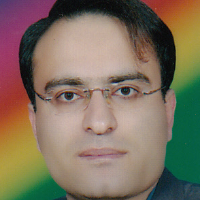Efficacy of Myrtus communis L. and Descurainia sophia L. Versus Salicylic Acid for Wart Treatment
Author(s):
Abstract:
Background
Wart is a skin disease with circular appendages, which is called “suloul” in Iranian traditional medicine (ITM). According to ITM literature, warts have different types and causes. The most important mechanism is excretion of materials (Khelt) from body to skin and mucus; its causative material is often phlegm, black bile or a combination of them. To treat warts, it is necessary to consider the patient’s life style, modify his dietary intake and moisturize his temperament..Objectives
This study aimed to compare Myrtus communis L. and Descurainia sophia L. as a method of ITM, versus salicylic acid in treatment of wart..Patients and Methods
In this study, conducted in Yazd, Iran, 100 patients were selected and randomly divided into four groups. Group 1) salicylic acid, group 2) salicylic acid and D. sophia L. group 3) M. communis L. group 4) M. communis L. and D. sophia L. Numbers, sizes of lesions and symptoms, on days 0, 20, 40 and 90 were examined and analyzed. The relapse rate was investigated three months after. Changes of sizes and numbers of warts in each period of time in each group, compared to baseline, were assessed by Wilcoxon Signed Rank test. To compare these changes between the groups, Kruskal Wallis test was used..Results
In this study 100 patients participated, 69% of which were female. Compared to baseline, mean ± SD of changes for the number of warts in day 40 were 1.12 ± 4.2, 0.96 ± 2.5, 1.32 ± 5.1 and 0.04 ± 0.2 respectively in the four groups (P = 0.02). Mean ± SD of changes for the number of warts in day 90 were 1.84 ± 4.5, 1.56 ± 2.8, 1.24 ± 5.1 and 0.04 ± 0.6 respectively in the four groups (P = 0.03). In addition mean ± SD of changes for the size of warts in day 40 were 0.96 ± 1.8, 1.03 ± 2.4, 2.47 ± 3.0 and 0.45 ± 1.7 respectively in the four groups (P < 0.001). Mean ± SD of changes for the size of warts in day 90 were 1.24 ± 2.1, 1.3 ± 2.3, 2.45 ± 3.1 and 0.45 ± 1.7 respectively in the four groups (P < 0.001). Relapse was not seen in any groups after three months. The frequency of side effects was similar after three months..Conclusions
M. communis L. can be used as a topical treatment for warts. It not only shows more rapid response than salicylic acid, but also has fewer side effects. It seems that D. sophia L. can modify the digestion process and patients can excrete large amounts of the substance that causes warts. Therefore, it is better to use it more than 40 days. According to our investigation, in ITM, considering the cause and mechanism of disease generation and the causing materials of the disease, different treatments should be applied for each patient. Although applying an appropriate treatment is necessary, a unique treatment for all the patients cannot be available..Keywords:
Language:
English
Published:
Iranian Red Crescent Medical Journal, Volume:16 Issue: 10, Oct 2014
Page:
15
magiran.com/p1326273
دانلود و مطالعه متن این مقاله با یکی از روشهای زیر امکان پذیر است:
اشتراک شخصی
با عضویت و پرداخت آنلاین حق اشتراک یکساله به مبلغ 1,390,000ريال میتوانید 70 عنوان مطلب دانلود کنید!
اشتراک سازمانی
به کتابخانه دانشگاه یا محل کار خود پیشنهاد کنید تا اشتراک سازمانی این پایگاه را برای دسترسی نامحدود همه کاربران به متن مطالب تهیه نمایند!
توجه!
- حق عضویت دریافتی صرف حمایت از نشریات عضو و نگهداری، تکمیل و توسعه مگیران میشود.
- پرداخت حق اشتراک و دانلود مقالات اجازه بازنشر آن در سایر رسانههای چاپی و دیجیتال را به کاربر نمیدهد.
In order to view content subscription is required
Personal subscription
Subscribe magiran.com for 70 € euros via PayPal and download 70 articles during a year.
Organization subscription
Please contact us to subscribe your university or library for unlimited access!


